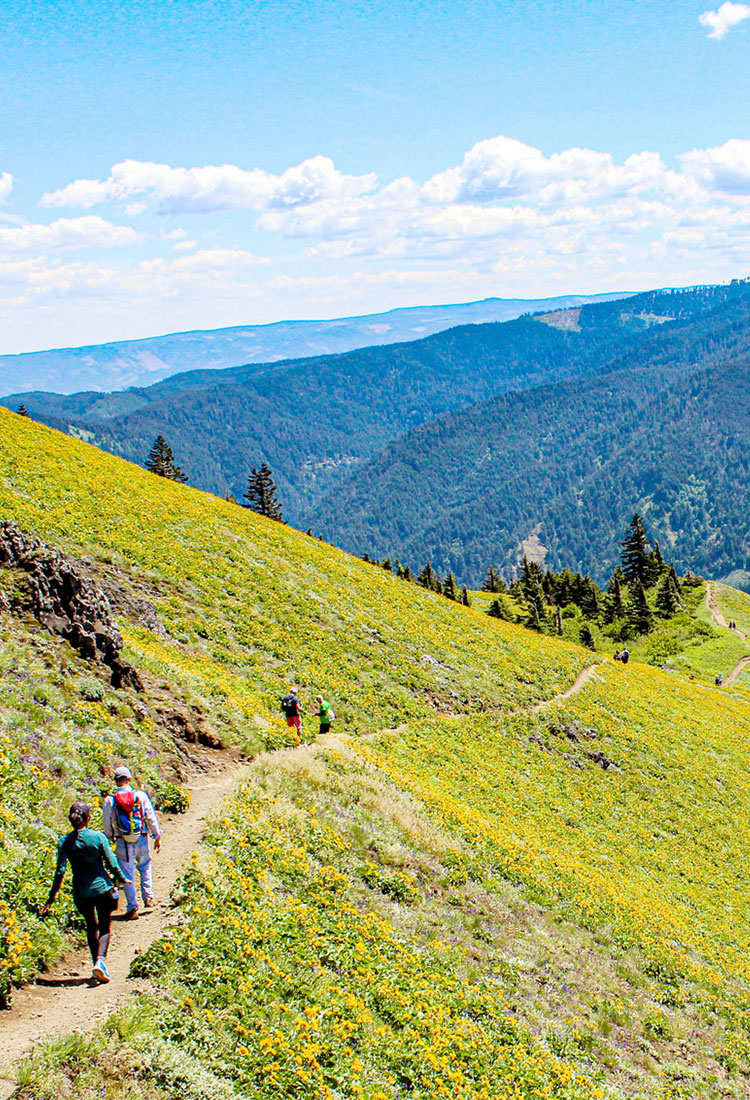It’s often easy to overlook the meanings and origins of place names once we become familiar with them. Many locations across the globe celebrate famous people, historical events, Indigenous cultures, and geographical features in their names. There are also many towns and cities that are named after animals, which often contain fascinating backstories. Some were chosen for practical reasons, while others are shrouded in local legends. From Beaver, Utah, to White Salmon, Washington, here’s the story of seven such cities in the U.S. that will provide plenty of fodder for animal lovers.
Boca Raton, Florida

The history behind the name of this sunbaked Florida city dates back to the arrival of the earliest Spanish settlers in the 18th century. Directly translated, Boca Raton means “rat’s mouth,” but the story isn’t as straightforward as it might seem. The city was originally called Boca de Ratones (or Boca Ratones), which was a common navigational term Spanish explorers used at the time to describe a craggy inlet with hidden sharp rocks that were hazardous to ships. The term appeared on early Spanish maps of the area, including around Biscayne Bay. At the turn of the century, this term was incorrectly applied to Lake Boca Raton, and from then on the area became Boca Raton, with the letters “s” and “e” removed around 1920.
Situated on Florida’s southeastern coast, Boca Raton is famous for its parks, golf courses, and miles of pristine beaches. Visitors can wander interpretive trails at Gumbo Limbo Nature Center and go snorkeling at Red Reef Park, while curious minds of all ages will find entertainment at the Children’s Science Explorium.
Beaver, Utah
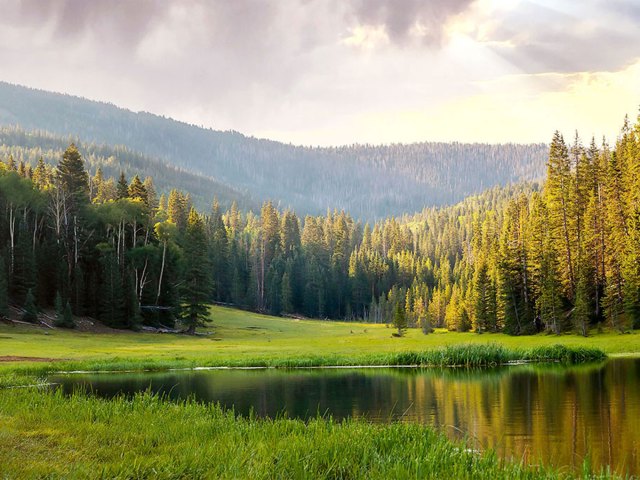
Utah’s Old West history still shines in the city of Beaver, set in the shadow of the Tushar Mountains in the southwest corner of the state. The seat of Beaver County, Beaver was the birthplace of the infamous outlaw Butch Cassidy. The city was originally settled in 1856, when groups from nearby Parowan arrived and set up log cabins along the riverfront. A town was established in 1858, and both it and the river were given the name Beaver thanks to the large quantities of beaver dams that settlers found in the area. The city and county later became a bustling mining region in the late 19th century.
Today, visitors can find traces of Beaver’s Old West and mining culture in the area’s ghost towns, such as Frisco. Beaver itself is also a popular base for year-round outdoor pursuits: Powder hounds can get their thrills on 650 acres of skiable terrain at Eagle Point Resort, while fishing enthusiasts can cast a line for trout at Minersville Reservoir. At Rock Corral Recreation Site, there are abundant opportunities for hiking, horseback riding, and rock climbing adventures.
Buffalo, New York
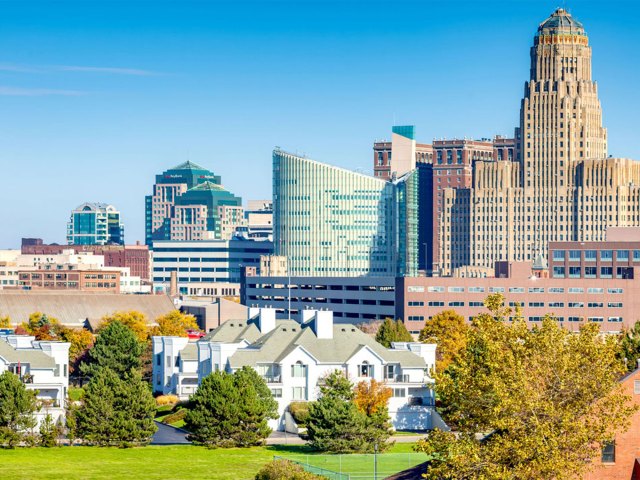
Buffalo has one of the most famous animal-inspired city names in the U.S. Historians mostly agree that the city is named after the Buffalo Creek (now called Buffalo River). There are several theories behind the naming of the creek itself. The earliest dates back to 1825, when French missionaries stole a horse from a Native American tribe and were said to have served the horse as bison meat, after which it was known as Buffalo Creek — though this theory has little proof. A more likely explanation is that the creek was named after a Seneca tribesman whose name meant buffalo.
Today, Buffalo is the second-largest city in New York, a buzzing destination for art, history, and outdoor activities. Popular attractions include the Buffalo AKG Art Museum and the striking Frank Lloyd Wright-designed buildings at the Martin House Complex. Buffalo Waterfront features beaches, parks, family-friendly entertainment, and watersports. And sports fans can get their fix at Highmark Stadium, home of the Buffalo Bills NFL team.
Chicken, Alaska

Alaska contains over half of America’s protected wilderness areas, so it’s no surprise that the “Last Frontier” is home to many places named after wildlife. One of these is Chicken, a tiny community of around 10 permanent residents situated close to the border of Canada’s Yukon territory. Founded by miners in the 1890s, the name of the town was decided during a community meeting. Residents originally agreed upon Ptarmigan (a genus of birds in the grouse family) after the large quantities of the animals found in the region. However, they settled on Chicken because nobody was confident enough to spell ptarmigan correctly.
Following the harsh winter months, Chicken comes to life in the summer. A huge metal chicken statue celebrates the town’s quirky name and provides a photo opportunity for visitors, who can also try gold panning at Chicken Gold Camp and Outpost or delve deeper into the region’s mining history at the Pedro Gold Dredge. The cultural highlight of the summer is June’s annual Chickenstock Music Festival, when artists and musicians from Alaska and the Yukon put on a lively, family-friendly weekend of events.
Dinosaur, Colorado
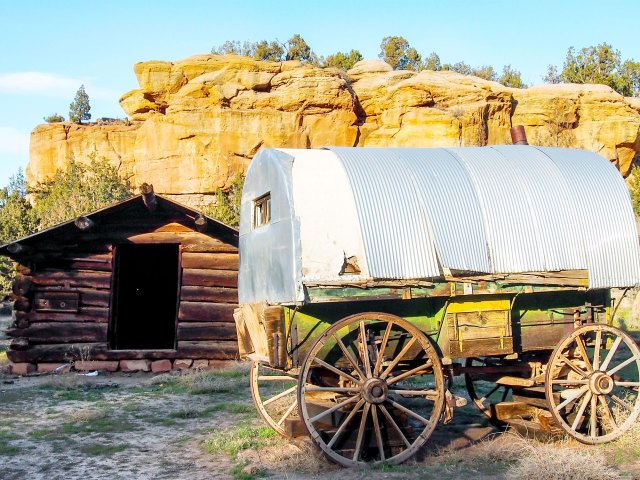
Dinosaur is a town of just over 300 residents located in the wilds of northwest Colorado, the same lands where dinosaurs once roamed millions of years ago. Formerly home to the Fremont Indians and later the Ute Indians, the town was originally called Baxter Flats — named after a rancher couple who built a homestead here. It was later renamed Artesia after an artesian well found on the Baxter homestead. The name Dinosaur was officially incorporated in 1966 in a bid to capitalize on the town’s proximity to Dinosaur National Monument.
The town’s main attraction is the national monument, which covers 210,000 acres of desert straddling the Colorado-Utah border. On the Utah side, more than 1,500 dinosaur fossils, including ones of the diplodocus and stegosaurus, are etched into rocks inside the Quarry Exhibit Hall. The Colorado side offers views of breathtaking canyons and whitewater rafting on the Green and Yampa Rivers. Other area highlights include the 31-mile Harpers Corner Road scenic drive, Harpers Corner Trail, and the Swelter Shelter petroglyphs.
Phoenix, Arizona

Hundreds of years before it became America’s most populous capital city, the area now known as Phoenix was occupied by the Hohokam peoples. The city’s modern history began in 1867, when Arizona pioneer Jack Swilling arrived in the area and laid the foundations for a village called Swilling’s Mill, which then changed to Helling Mill and Mill City. But it was pioneer and civic leader Darrel Duppa who suggested the name Phoenix in 1870. He believed that the new town would rise from the ashes (like the mythical phoenix) of a former civilization.
Sure, it’s named after a mythical creature rather than a real one, but that doesn’t change the fact that Phoenix today is a vibrant city surrounded by the Sonoran Desert, famed for its year-round sunshine and warm temperatures. Home to luxury spas, golf courses, and desert hiking trails, it offers both relaxation and adventure. Among the city’s many highlights are Camelback Mountain, the Desert Botanical Garden, and the shopping, dining and nightlife scene of the Melrose District. Sports fans can attend a game from three major U.S. professional leagues, while music lovers can get their groove on at events like the Goldrush Music Festival.
White Salmon, Washington
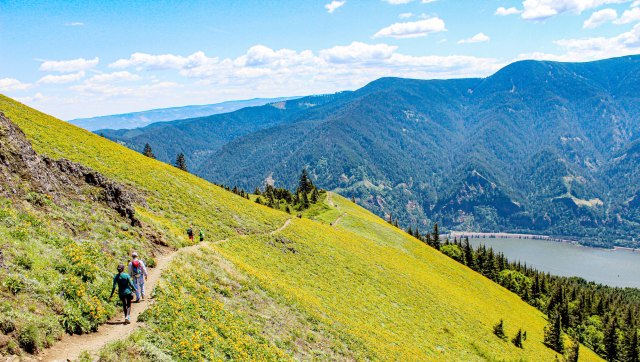
There’s nothing fishy about the naming of this town on the banks of the Columbia River, which largely defines the border of Washington and Oregon. Flanking the west side of the town is the White Salmon River, a 44-mile tributary that originates in Mount Adams and flows south into the Columbia. Pioneers Lewis and Clark named this river after the now-extinct fish species that they watched the Klickitat peoples catch. When the town was incorporated in 1907, it adopted the river’s name.
White Salmon has a laid-back vibe and is known for its outdoor recreation opportunities and craft beer scene. It’s a go-to destination for kiteboarding, windsurfing, and whitewater rafting in the Pacific Northwest. White River also boasts easy access to the Columbia River Gorge National Scenic Area, Gifford Pinchot National Forest, and Mount Adams Wilderness. Among the city’s popular annual events is May’s White Salmon Wildflower Festival.
More from our network
Daily Passport is part of Inbox Studio, which publishes content that uplifts, informs, and inspires.






